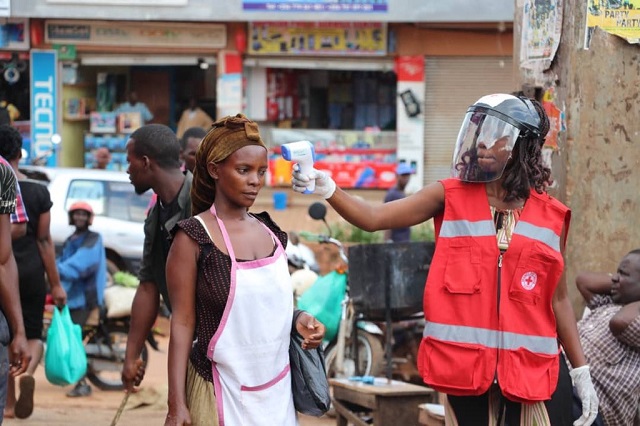
Kampala, Uganda | THE INDEPENDENT | The Uganda National Bureau of Standards (UNBS) insists that Non-Contact Infrared Thermometers should all give similar and accurate temperature readings if used according to their guidelines.
This can only fail if the thermometers, also called temperature guns are either faulty, not up to standard or need calibration, according to UNBS. But UNBS adds that it also depends on how correctly it is used by the person operating it, and this called for some basic training of the user.
The UNBS’s explanation comes amidst queries on the importance of the gadgets and their accuracy. It is common for three temperature guns to be applied on one person within intervals of a few minutes, but giving widely varying results, which creates doubts about their accuracy and importance.
The average normal body temperature is generally accepted as 37 degrees centigrade (37°C) with some studies showing that “normal” body temperature can have a wide range, from 36.1°C to 37.2°C. A temperature over 38 degrees centigrade (38°C) most often means you have a fever caused by an infection or illness, and this could lead to your isolation as a possible case of coronavirus infection.
The use of temperature guns around Uganda has significantly gone down today, compared to the situation in the first wave of the COVID-19 pandemic. By June, last year, all public places, including private and government offices, shops, hotels, and later churches, among others, were required to have the hand-held thermometers, before being allowed to open their businesses.
Taking and recording the temperature of all people on the premises was one of the requirements (SOPs) by the government for the businesses to open. A rise in temperature above the normal level for a healthy human being was considered one of the possible early symptoms of infection with coronavirus, which causes COVID-19.
As the infection cases fell and the government eased the restrictions, many organisations or businesses relaxed on this requirement. This coincided with arguments about the relevance of temperature reading, amidst reports that many people are diagnosed positive even with their body temperatures remaining normal.
But the UNBS says there is widespread misuse of the gadgets, including applying them wrongly and not following the maintenance guidelines. Deus Mubangizi, UNBS Manager National Metrology Laboratories says some start using the guns as soon as they are bought, without calibrating them first.
UNBS says that some thermometers will give wrong readings even when calibrated, because sometimes they are left to personnel who are not trained to use them. Mubangizi notes that some users do not allow the thermometer enough time to fully read the temperatures, and end up recording the temperature on the surface of the body, while others point it on a wrong part of the body, like the wrist instead of the forehead.
The guidelines and instructions for proper use, which are also given by the manufacturer show how they should be used, stored, cleaned and/or disinfected.
Many organisations have since acquired multipurpose gadgets, which are able to check and remind a person to wear their facemasks, sanitise their hands and then take the temperature all in one go.
The usually wall-mounted thermometers are more expensive than the handheld ones, costing between 230,000 and 350,000 Shillings.
The handheld temperature guns now cost between 70,000 and 100,000 shillings in Kampala, depending on the brand and where it was made. Those made in the USA, Germany and the UK are usually higher-priced than those from Asian countries like India, China and Taiwan.
****
URN
 The Independent Uganda: You get the Truth we Pay the Price
The Independent Uganda: You get the Truth we Pay the Price




I have shifted myself from the mammals to reptile family based on readings of a thermometer held 15cm from my fore head at agate of an institution. It records a temperature range from 34oC to 35oC while
one in a bank located at a busy shopping mall recorded 35oC
UNBS please educate us
who was supposed to enforce quality, calibration, maintenance of item, hygienic practice and training of users in this country?